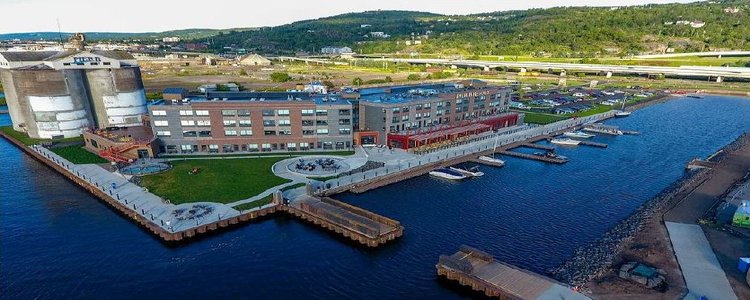Brownfields are abandoned, idled, or underused industrial and commercial properties where financing expansion or redevelopment is complicated by actual abandoned building on a brownfield site or suspected environmental contamination as a result of past uses.
For example, a dry cleaning business may have disposed of chemical solvents down the drain, contaminating the groundwater. Or, older buildings may have been constructed with asbestos containing materials like pipe insulation which is a serious health hazard when disturbed during demolition or renovation.
Revitalizing brownfield sites offers an opportunity for communities to spur economic growth, resolve neighborhood blight, increase community connectivity, restore ecological balance and promote public health.
The benefits are tremendous, but often the task of transforming these sites into productive community assets can present challenges, including the complicated process of identifying and prioritizing the redevelopment strategies that will best meet the long-term needs of the environment and community.
Minnesota Brownfields and the Minnesota Department of Health have developed a Brownfield and Health Indicator Tool to help community planners, landscape architects, developers and community leaders overcome this challenge. The Brownfield and Health Indicator Tool incorporates a series of indicators that address community health factors and aims to streamline project decision-making process by providing a framework for stakeholders to identify and prioritize redevelopment goals.
Designed as a self-guided tool by those who influence and work on brownfield projects, the Brownfield Health Indicator Tool’s framework supports existing project decision-making processes.
“Communities across Minnesota are looking for brownfield redevelopment best practices that balance the demands of economic growth with environmental and public health protection,” said Martha Faust, executive director of Minnesota Brownfields.
“There are so many things to consider when redeveloping a brownfield site, which makes it difficult to organize and prioritize needs. Our partnerships at state and city levels have demonstrated that we can remove one of the process barriers in brownfield redevelopment by using this tool’s framework and by working on this together, we can better support the revitalization of Minnesota communities,” she continued.
Minnesota Brownfields is a 501c3 non-profit organization. Their mission is to promote, through education, research, and partnerships, the efficient cleanup and reuse of contaminated land as a means of generating economic growth, strengthening communities and enabling sustainable land use and development. It was established in 2006 to promote the voluntary investigation, cleanup and redevelopment of brownfield sites throughout Minnesota.
Feature photo is Pier B Resort, Duluth’s largest private redevelopment, located on a Lake Superior waterfront brownfield. Photo credit: Minnesota Brownfields.
Access the Brownfield Health Indicator Tool.
Learn more about the tool’s launch and current pilot project by the City of Duluth.
See MN Department of Health’s Brownfields and Public Health page.

